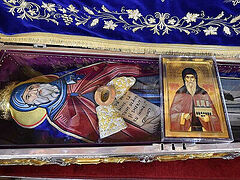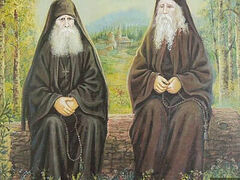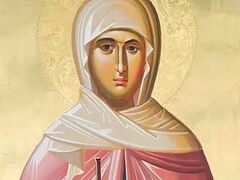Petroșani, Gorj County, Romania, August 9, 2022
 Fr. Gherasim (Iscu). Photo: basilica.ro
Fr. Gherasim (Iscu). Photo: basilica.ro
At its latest session at Lainici Monastery on Saturday, the Metropolitan Synod of Oltenia of the Romanian Orthodox Church discussed the proposals for canonization of several holy men.
During the meeting, the hierarchs approved the liturgical texts that will form the services for Fr. Gherasim (Iscu), Fr. Visarion (Toia), and Fr. Ioan of Horezu, who are being proposed for canonization, reports the Basilica News Agency.
His Grace Bishop Varlaam of Ploești first revealed in March 2021 that the Romanian Holy Synod is looking to canonize Elder Gherasim (Iscu) in 2025, together with a number of other holy confessors and martyrs.
***
Fr. Gherasim (Iscu)
Fr. Gherasim was born in the Poduri commune on January 21, 1912.
At the age of 12, he entered Bogdana Monastery as a novice. He also studied at the monastic seminaries at the Neamț and Cernica Monasteries, and completed higher studies at the Theological Faculty in Bucharest. He knew seven foreign languages.
He was tonsured into monasticism at Tismana Monastery, and became abbot of Arnota Monastery at the tender age of 25. He was later sent on a mission to Transnistria, and upon his return, he became abbot of Tismana in a very troubled time, taking over the holy habitation after it had been used as a camp for Legionnaires’ prisoners and suffered a serious fire in 1942.
He was arrested on September 26, 1948, and spent time in several camps. After severe suffering, he fell ill and reposed in the Lord on December 25, 1951.
 Fr. Visarion (Toia). Photo: basilica.ro Fr. Visarion (Toia)
Fr. Visarion (Toia). Photo: basilica.ro Fr. Visarion (Toia)
Fr. Visarion was born on May 28, 1884, in Secuieni commune, to simple, pious parents.
He was tonsured into monasticism at Frăsinei Monastery in 1910, and ordained a hieromonk in 1922. In the summer of 1929, he was appointed abbot of the suffering Lainici Monastery. In addition to the managing the monastery assets, he managed to grow the community to more than 20 monks within 10 years.
He endured many hardships at the hands of the communist regime. He died in agony in 1951, following a beating suffered about a year prior by the commander of a military unit stationed in the monastery.
Fr. Ioan of Horezu
Fr. Ioan of Horezu was originally from the Argeș area. He entered monasticism at Negru Vodă Monastery, where he was ordained a hieromonk and later became the abbot.
In 1692, St. Constantin Brâncoveanu appointed him administrator of Horezu Monastery, which was then under construction. He went on to lead the monastery for 33 years.
 Fr. Ioan of Horezu. Photo: basilica.ro
Fr. Ioan of Horezu. Photo: basilica.ro
He went on to lead the building and restoration or a number of sketes and monasteries, being considered “the most skilled administrator of churches and monasteries in Wallachia.”
He was also the closest advisor and confessor of the ruling Brâncoveanu family.
For his efforts, he asked for nothing more than to be commemorated: “I humbly pray that on all Thursdays throughout the year, once a week, the Divine Liturgy won’t be missed, so that my soul can also enjoy that prayer of your saints , and that my wretched soul may have hope in the glory of God.”
He reposed in the Lord in the summer of 1726 and was buried in the monastery church.
Follow OrthoChristian on Twitter, Vkontakte, Telegram, WhatsApp, MeWe, and Gab!



